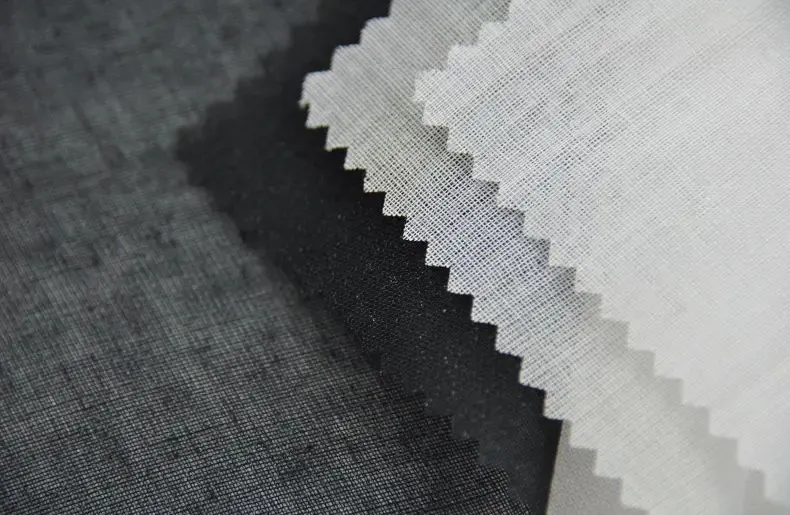Enhancing Every Garment
The consumer’s enhanced apparel fusible interlining fabric awareness of garment quality, appearance, and related eco-safety production manufacture means that not only shell fabrics, but also accessory materials should be paid much more attention. Interlining is the one of the most important and state of the art accessory materials that currently lacks review and exploration. This article comprehensively demonstrates an organizational integration of interlinings which includes their history, classification, manufacture, characteristic, properties, function, fusing technology and application. In addition, the article highlights a new innovation of printable interlining, which could replace the traditional fusible interlinings because of its cost-effectiveness, its simple process and its environmentally-friendly nature.Interlining is a layer of fabric inserted between the shell fabric and the lining of a garment to give clothing a suitable appearance and stability. It has a long history and exists in diverse forms based on its substrate and application.

The most well-known and widely used interlinings are fusible interlinings and this article mainly focused on fusible interlinings.Although previous research articles concerning the properties and functions of shell fabrics fuse different interlinings by suitable fusing technology, there is a lack of integral comprehension of the knowledge of fusible interlinings. This review article will systematically summarize state-of-the-art progress in the history, classification, manufacture, characteristics, properties, function, fusing technology and application of these materials. Among the abundant research work devoted to interlinings, the big challenge of extending their properties into better quality and cost-effectively fabric has long been recognized as the core issue for practical applications. Researchers never stop their forward process on the way to the new areas of material and technology, and this has led to printable interlinings being created in place of traditional fusible interlinings. The major knowledge and techniques are reviewed here in order to give helpful guidance for future researchInterlining is a kind of accessory material that is a crucial element influencing the quality and performance of garments and furthermore has effects on consumer purchases.
Interlining has a long history, it has experienced a long process of classification extension, production technology improvement, and function development shows the details of interlinings’ evolution.Based on the application method, there are two kinds of interlinings: Sewn interlining and fusible interlining. The interlining which could be fixed with the garments components by sewing is called sewn interlining. For the preparation of sewn interlining a piece of fabric is treated with starch and allowed to dry and finally sewn with the main fabric. In addition, the fusible interlining which could be fixed with the garments components by applying heat and pressure for a certain time is called fusible interlining. Compared with sewn interlinings, the overall performance of fusible interlinings is better, and the fusing technique is easier. The interlining in this article refers to fusible interlining.Basically, the classification of interlinings is based on the base cloth substrate. A substrate is an interlining material onto which the thermoplastic resin is coated, sprayed or printed.
There are different types of interlinings woven interlining non-woven interlining; knitted interlining; non-general interliningsWoven interlining is a woven substrate base of fusible interlining . Woven interlinings are used for different zones along the garment warp. Each zone possesses different properties in terms of handle, drape, and resilience. Woven interlinings made from lightweight fabrics usually used for the most demanding conditions like jackets, waistband, outerwear plackets, collars and front shirt bands etc. An outstanding example of this application is an interlining with a soft handle in the warp and a firm handles in the weft. This interlining is specifically produced for the fronts of men’s jackets and provides a firm basis for the length of the front and also prevents the lateral sections across the chest and shoulder from collapsing. Woven interlinings support a very good performance of the garment. However, it has a relatively high cost in comparison with other types available.